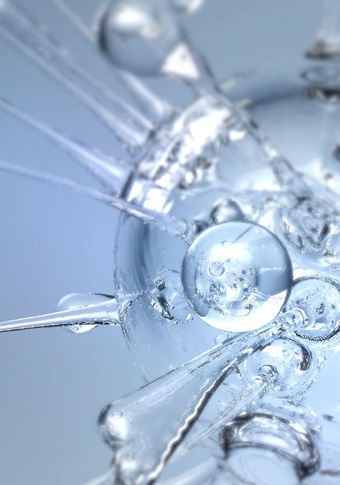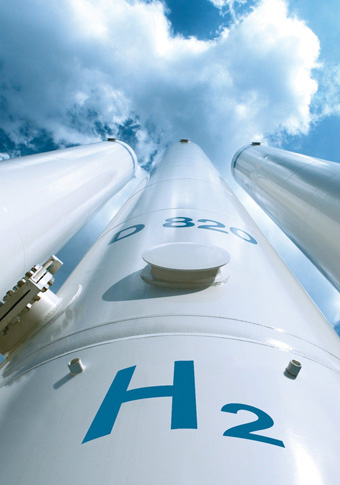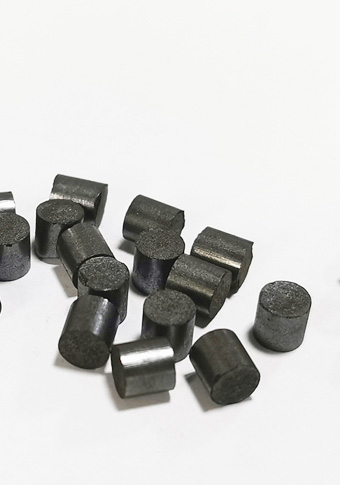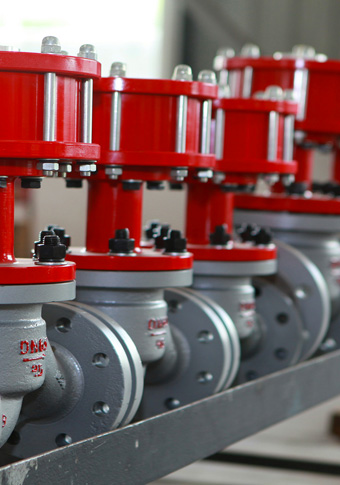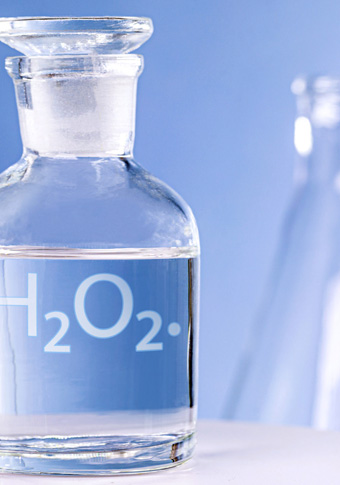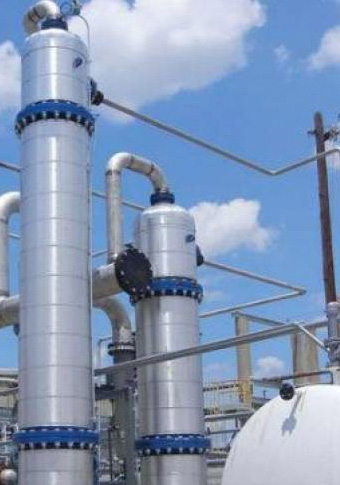In the alkaline electrolyzer hydrogen production process, how to make the device run stable operation, in addition to the quality of the electrolyzer itself, in which the lye circulation amount of the setting is also an important influence factor.
Recently, at the China Industrial Gases Association Hydrogen Professional Committee's Safety Production Technology Exchange Meeting, Huang Li, the head of Hydrogen Water Electrolysis Hydrogen Operation and Maintenance Program, shared our experience on hydrogen and lye circulation volume setting in the actual testing and operation and maintenance process.
The following is the original paper.
——————
Under the background of the national dual-carbon strategy, Ally Hydrogen Energy Technology Co., Ltd, which has been specialized in hydrogen production for 25 years and was the first to get involved in the field of hydrogen energy, has started to expand the development of green hydrogen technology and equipment, including the design of electrolysis tank runners, equipment manufacturing, electrode plating, as well as electrolysis tank testing and operation and maintenance.
One Alkaline Electrolyzer Working Principle
By passing a direct current through an electrolyzer filled with electrolyte, water molecules are electrochemically reacted on the electrodes and decomposed into hydrogen and oxygen. In order to enhance the conductivity of the electrolyte, the general electrolyte is an aqueous solution with a concentration of 30% potassium hydroxide or 25% sodium hydroxide.
The electrolyzer consists of several electrolytic cells. Each electrolysis chamber consists of cathode, anode, diaphragm and electrolyte. The main function of the diaphragm is to prevent gas permeation. In the lower part of the electrolyzer there is a common inlet and outlet, the upper part of the gas-liquid mixture of alkali and oxy-alkali flow channel. Passed into a certain voltage of direct current, when the voltage exceeds the theoretical decomposition voltage of water 1.23v and thermal neutral voltage 1.48V above a certain value, the electrode and the liquid interface redox reaction occurs, water is decomposed into hydrogen and oxygen.
Two How the lye is circulated
1??Hydrogen, Oxygen Side Lye Mixed Cycle
In this form of circulation, the lye enters the lye circulation pump through the connecting pipe at the bottom of the hydrogen separator and oxygen separator, and then enters the cathode and anode chambers of the electrolyzer after cooling and filtering. The advantages of mixed circulation are simple structure, short process, low cost, and can ensure the same size of lye circulation into the cathode and anode chambers of the electrolyzer; the disadvantage is that on the one hand, it may affect the purity of hydrogen and oxygen, and on the other hand, it may cause the level of the hydrogen-oxygen separator to be out of adjustment, which may result in the increased risk of hydrogen-oxygen mixing. At present, the hydrogen-oxygen side of the lye mixing cycle is the most common process.
2??Separate circulation of hydrogen and oxygen side lye
This form of circulation requires two lye circulation pumps, i.e. two internal circulations. The lye at the bottom of the hydrogen separator passes through the hydrogen-side circulation pump, is cooled and filtered, and then enters the cathode chamber of the electrolyzer; the lye at the bottom of the oxygen separator passes through the oxygen-side circulation pump, is cooled and filtered, and then enters the anode chamber of the electrolyzer. The advantage of independent circulation of lye is that the hydrogen and oxygen produced by electrolysis are of high purity, physically avoiding the risk of mixing hydrogen and oxygen separator; the disadvantage is that the structure and process are complicated and costly, and it is also necessary to ensure the consistency of the flow rate, head, power and other parameters of the pumps on both sides, which increases the complexity of the operation, and puts forward the requirement of controlling the stability of both sides of the system.
Three Influence of circulating flow rate of lye on hydrogen production by electrolytic water and working condition of electrolyzer
1??Excessive circulation of lye
(1)Effect on hydrogen and oxygen purity
Because hydrogen and oxygen have a certain solubility in the lye, the circulation volume is too large so that the total amount of dissolved hydrogen and oxygen increases and enters into each chamber with the lye, which causes the purity of hydrogen and oxygen to be reduced in the outlet of the electrolyzer; the circulation volume is too large so that the retention time of the hydrogen and oxygen liquid separator is too short, and the gas which has not been completely separated is brought back into the interior of the electrolyzer with the lye, which affects the efficiency of the electrolyzer's electrochemical reaction and the purity of hydrogen and oxygen, and further This will affect the efficiency of electrochemical reaction in electrolyzer and the purity of hydrogen and oxygen, and further affect the ability of hydrogen and oxygen purification equipment to dehydrogenate and deoxygenate, resulting in poor effect of hydrogen and oxygen purification and affecting the quality of products.
(2) Effect on tank temperature
Under the condition that the outlet temperature of the lye cooler remains unchanged, too much lye flow will take away more heat from the electrolyzer, causing the tank temperature to drop and the power to increase.
(3)Effect on current and voltage
Excessive circulation of lye will affect the stability of current and voltage. Excessive liquid flow will interfere with the normal fluctuation of the current and voltage, causing the current and voltage not to be easily stabilized, causing fluctuations in the working condition of the rectifier cabinet and transformer, and thus affecting the production and quality of hydrogen.
(4)Increased energy consumption
Excessive lye circulation can also lead to increased energy consumption, increased operating costs and reduced system energy efficiency. Mainly in the increase of auxiliary cooling water internal circulation system and external circulation spray and fan, chilled water load, etc., so that the power consumption increases, the total energy consumption increases.
(5)Cause equipment failure
Excessive lye circulation increases the load on the lye circulation pump, which corresponds to increased flow rate, pressure and temperature fluctuations in the electrolyzer, which in turn affects the electrodes, diaphragms and gaskets inside the electrolyzer, which may lead to equipment malfunctions or damages, and an increase in the workload for maintenance and repair.
2??Lye circulation too small
(1)Effect on tank temperature
When the circulating volume of lye is insufficient, the heat in the electrolyzer cannot be taken away in time, resulting in an increase in temperature. The high temperature environment makes the saturated vapor pressure of water in the gas phase rise and the water content increase. If the water can not be condensed sufficiently, it will increase the burden of the purification system and affect the purification effect, and it will also affect the effect and life span of the catalyst and adsorbent.
(2)Impact on diaphragm life
Continuous high temperature environment will accelerate the aging of the diaphragm, make its performance decline or even rupture, easy to cause the diaphragm on both sides of the hydrogen and oxygen mutual permeability, affecting the purity of hydrogen and oxygen. When mutual infiltration close to the lower limit of the explosion so that the probability of electrolyzer danger greatly increased. At the same time, the continuous high temperature will also cause leakage damage to the sealing gasket, shortening its service life.
(3)Effect on electrodes
If the circulating amount of lye is too small, the gas produced cannot leave the active center of the electrode quickly, and the electrolysis efficiency is affected; if the electrode cannot fully contact with the lye to carry out the electrochemical reaction, partial discharge abnormality and dry burning will occur, accelerating the shedding of the catalyst on the electrode.
(4 )Effect on cell voltage
The amount of lye circulating is too small, because the hydrogen and oxygen bubbles generated in the active center of the electrode cannot be taken away in time, and the amount of dissolved gases in the electrolyte increases, causing an increase in the voltage of the small chamber and a rise in power consumption.
Four Methods for determining optimum lye circulation flow rate
To solve the above problems, it is necessary to take corresponding measures, such as regularly checking the lye circulation system to ensure its normal operation; maintaining good heat dissipation conditions around the electrolyzer; and adjusting the operating parameters of the electrolyzer, if necessary, in order to avoid the occurrence of too large or too small a volume of lye circulation.
The optimum lye circulation flow rate needs to be determined based on specific electrolyzer technical parameters, such as electrolyzer size, number of chambers, operating pressure, reaction temperature, heat generation, lye concentration, lye cooler, hydrogen-oxygen separator, current density, gas purity and other requirements, equipment and piping durability and other factors.
Technical Parameters Dimensions:
sizes 4800x2240x2281mm
total weight 40700Kg
Effective chamber size1830、Number of chambers 238個(gè)
Electrolyzer current density 5000A/m2
operating pressure 1.6Mpa
reaction temperature 90℃±5℃
Single set of electrolyzer product hydrogen volume 1300Nm3/h
Product Oxygen 650Nm3/h
direct current n13100A����、dc voltage 480V
Lye Cooler Φ700x4244mm
heat exchange area 88.2m2
Hydrogen and oxygen separator Φ1300x3916mm
oxygen separator Φ1300x3916mm
Potassium hydroxide solution concentration 30%
Pure water resistance value >5MΩ·cm
Relationship between potassium hydroxide solution and electrolyzer:
Make pure water conductive, bring out hydrogen and oxygen, and take away heat. The cooling water flow is used to control the lye temperature so that the temperature of the electrolyzer reaction is relatively stable, and the heat generation of the electrolyzer and the cooling water flow are used to match the heat balance of the system to achieve the best working condition and the most energy-saving operating parameters.
Based on actual operations:
Lye circulation volume control at 60m3/h���,
Cooling water flow opens at about 95%,
The reaction temperature of the electrolyzer is controlled at 90°C at full load�,
The optimum condition electrolyzer DC power consumption is 4.56 kWh/Nm3H?.
Five summarize
To summarize, the circulation volume of lye is an important parameter in the process of hydrogen production by water electrolysis, which is related to gas purity, chamber voltage, electrolyzer temperature and other parameters. It is appropriate to control the circulating volume at 2~4 times/h/min of lye replacement in the tank. By effectively controlling the circulation volume of lye, it ensures the stable and safe operation of water electrolysis hydrogen production equipment for a long period of time.
In the hydrogen production process by water electrolysis in alkaline electrolyzer, optimization of working condition parameters and electrolyzer runner design, combined with electrode material and diaphragm material selection are the key to increase current, reduce tank voltage and save energy consumption.


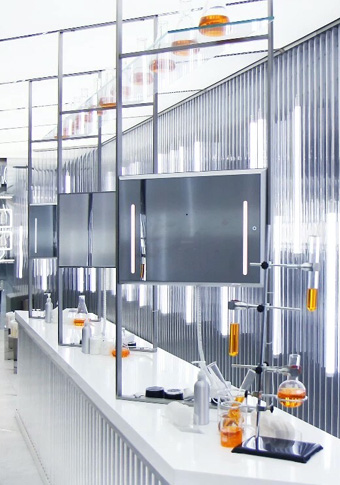 research and development results
research and development results
